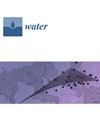应用海洋软体动物贝壳(Meretrix lusoria)作为低成本生物吸附剂去除水溶液中的 Cd2+ 和 Pb2+ 离子:动力学和平衡研究
IF 3
3区 环境科学与生态学
Q2 ENVIRONMENTAL SCIENCES
引用次数: 0
摘要
本研究旨在评估软体动物(Meretrix lusoria)贝壳作为生物吸附剂在批量生物吸附过程中对有毒金属离子(Cd2+ 和 Pb2+)的适用性。一些著名的分析方法被用来表征生物吸附剂,如扫描电子显微镜(SEM)、能量色散 X 射线(EDX)、傅立叶变换红外光谱(FTIR)和 X 射线衍射。利用各种分析技术研究了金属离子的生物吸附机理。因此,对接触时间、pH 值、金属离子初始浓度、生物吸附剂剂量和温度等操作因素进行了评估。研究结果表明,生物吸附 Cd+2 和 Pb+2 离子的最佳条件如下:pH=6;接触时间为 90 分钟;初始[M2+]浓度为 20 毫克/升。同时还确定了每种金属离子溶液的生物吸附剂用量为 1.0 g/100 mL。在 pH 值为 6.0 时,Cd+2 和 Pb+2 的最大去除率分别为 90.6%和 91.5%。使用三种线性平衡形式(Freundlich、Langmuir 和 Temkin 模型)对生物吸附等温线进行了研究。此外,还利用伪二阶、伪一阶和颗粒内扩散模型进行了动力学研究,以确定所研究金属的生物吸附平衡时间。数据表明,Cd2+ 和 Pb2+ 的生物吸附动力学遵循伪二阶模型。根据本研究,可以确定鱼腥草壳是 Cd2+ 和 Pb2+ 离子的合适生物吸附剂,有助于从环境污染的水中去除这两种离子。本文章由计算机程序翻译,如有差异,请以英文原文为准。
Application of Marine Mollusk Shells (Meretrix lusoria) as Low-Cost Biosorbent for Removing Cd2+ and Pb2+ Ions from Aqueous Solution: Kinetic and Equilibrium Study
The present work aims to evaluate the applicability of mollusk (Meretrix lusoria) shells as a biosorbent for toxic metal ions (Cd2+ and Pb2+) following the batch mode biosorption procedure. Some well-known analytical methods have been used to characterize the biosorbent such as a scanning electron microscope (SEM), an energy dispersive X-ray (EDX), Fourier transform infrared spectroscopy (FTIR), and X-ray diffraction. The mechanism of metal ion biosorption was examined using various analytical techniques. Therefore, an evaluation of operating factors such as contact time, pH, initial concentration of metal ions, biosorbent dose, and temperature was performed. The results obtained in this investigation indicated that the optimum conditions for the biosorption of Cd+2 and Pb+2 ions are as follows: pH = 6; contact times of 90 min; and the 20 mg/L of initial [M2+]. And a biosorbent dosage of 1.0 g/100 mL for each metal ion solution was also determined. The maximum removal efficiency results were 90.6% for Cd+2 and 91.5% for Pb+2 at pH 6.0. The biosorption isotherm was investigated using three forms of linear equilibrium (Freundlich, Langmuir, and Temkin models). Kinetic studies were also conducted to determine the equilibrium time for the biosorption of the studied metals utilizing the pseudo-second-order, pseudo-first-order, and intraparticle diffusion model. The data indicate that the biosorption kinetics of Cd2+ and Pb2+ follow the pseudo-second-order models. According to the present study, it can be identified that the shell of Meretrix lusoria is a suitable biosorbent for Cd2+ and Pb2+ ions and can contribute to their removal from environmentally polluted water.
求助全文
通过发布文献求助,成功后即可免费获取论文全文。
去求助
来源期刊

Water
WATER RESOURCES-
CiteScore
5.80
自引率
14.70%
发文量
3491
审稿时长
19.85 days
期刊介绍:
Water (ISSN 2073-4441) is an international and cross-disciplinary scholarly journal covering all aspects of water including water science and technology, and the hydrology, ecology and management of water resources. It publishes regular research papers, critical reviews and short communications, and there is no restriction on the length of the papers. Our aim is to encourage scientists to publish their experimental and theoretical research in as much detail as possible. Full experimental and/or methodical details must be provided for research articles. Computed data or files regarding the full details of the experimental procedure, if unable to be published in a normal way, can be deposited as supplementary material.
 求助内容:
求助内容: 应助结果提醒方式:
应助结果提醒方式:


